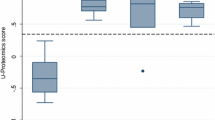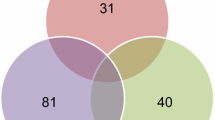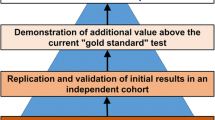Abstract
IgA nephropathy is the most common primary glomerulonephritis and is a frequent cause for chronic kidney disease in children and young adults. Glomerular deposition of IgA also characterizes other renal disorders, including Henoch-Schoenlein purpura nephritis and immune-complex glomerulonephritis afflicting patients with liver disease due to chronic infection with the hepatitis C virus. Several treatment options are often considered, with the goal to prevent end-stage renal failure. Unfortunately, the diagnosis currently requires an invasive procedure, a renal biopsy. Because of the inherent risks, repetitive renal biopsy is frequently foregone as a means to monitor the clinical course or response to treatment. Recent advances in the analysis of the urinary proteome suggest that the excreted polypeptides include disease-specific patterns. We review recent studies of the various techniques for the identification and validation of such urinary biomarkers of IgA-associated glomerulonephritides. Currently, capillary electrophoresis coupled with mass spectrometry (MS) offers the greatest promise. To date, it seems more likely that disease-specific urinary polypeptide biomarkers are comprised of a panel of several distinct and well-defined peptides rather than a single molecule. Even most patients in clinical remission with normal clinical testing (dipstick urinalysis and quantitative proteinuria) were correctly classified by the pattern of polypeptides identified by capillary electrophoresis coupled with MS. With confirmation and refinement, such urinary testing may provide a tool for the diagnosis and monitoring of patients with IgA-associated renal diseases that is more sensitive than current standard clinical testing and far less risky than renal biopsy.




Similar content being viewed by others
References
Levy M, Berger J (1988) Worldwide perspective of IgA nephropathy. Am J Kidney Dis 12:340–347
Jennette JC (1988) The immunohistology of IgA nephropathy. Am J Kidney Dis 12:348–352
Berger J, Hinglais N (1968) Les depots intercapillaires d’IgA–IgG (intercapillary deposits of IgA–IgG). J Urol Nephrol 74:694–695
Yoshikawa N, Iijima K, Matsuyama S, Suzuki J, Kameda A, Okada S, Nakamura H (1990) Repeat renal biopsy in children with IgA nephropathy. Clin Nephrol 33:160–167
Davin JC, Ten Berge IJ, Weening JJ (2001) What is the difference between IgA nephropathy and Henoch-Schönlein purpura nephritis? Kidney Int 59:823–834
Fervenza FC (2003) Henoch-Schönlein purpura nephritis. Int J Dermatol 42:170–177
Delos Santos NM, Wyatt RJ (2004) Pediatric IgA nephropathies: clinical aspects and therapeutic approaches. Semin Nephrol 24:269–286
Emancipator SN (1998) IgA nephropathy and Henoch-Schönlein syndrome. In: Jennette JC, Olson JL, Schwartz MM, Silva FG (eds) Heptinstall’s pathology of the kidney. Lippincott-Raven Publishers, Philadelphia, pp 479–539
Coppo R, Amore A, Cirina P, Messina M, Basolo B, Segoloni G, Berthoux F, Boulharouz R, Egido J, Alcazar R (1995) IgA serology in recurrent and non-recurrent IgA nephropathy after renal transplantation. Nephrol Dial Transplant 10:2310–2315
Julian BA, Said M, Barker CV (1998) Allograft loss in IgA nephropathy. J Am Soc Nephrol 9:91A
Odum J, Peh CA, Clarkson AR, Bannister KM, Seymour AE, Gillis D, Thomas AC, Mathew TH, Woodroffe AJ (1994) Recurrent mesangial IgA nephritis following renal transplantation. Nephrol Dial Transplant 9:309–312
Soler MJ, Mir M, Rodriguez E, Orfila A, Munne A, Vazquez S, Lloveras J, Puig JM (2005) Recurrence of IgA nephropathy and Henoch-Schoenlein purpura after kidney transplantation: risk factors and graft survival. Transplant Proc 37:3705–3709
Meulders Q, Pirson Y, Cosyns JP, Squifflet JP, van Ypersele de Strihou C (1994) Course of Henoch-Schoenlein nephritis after renal transplantation. Report on ten patients and review of the literature. Transplantation 58:1179–1186
Silva FG, Chander P, Pirani CL, Hardy MA (1982) Disappearance of glomerular mesangial IgA deposits after renal allograft transplantation. Transplantation 33:241–246
Novak J, Julian BA, Tomana M, Mestecky J (2001) Progress in molecular and genetic studies of IgA nephropathy. J Clin Immunol 21:310–327
Barratt J, Feehally J (2005) IgA nephropathy. J Am Soc Nephrol 16:2088–2097
Coppo R, Amore A (2004) Aberrant glycosylation in IgA nephropathy (IgAN). Kidney Int 65:1544–1547
Allen AC, Bailey EM, Brenchley PEC, Buck KS, Barratt J, Feehally J (2001) Mesangial IgA1 in IgA nephropathy exhibits aberrant O-glycosylation: observations in three patients. Kidney Int 60:969–973
Hiki Y, Odani H, Takahashi M, Yasuda Y, Nishimoto A, Iwase H, Shinzato T, Kobayashi Y, Maeda K (2001) Mass spectrometry proves under-O-glycosylation of glomerular IgA1 in IgA nephropathy. Kidney Int 59:1077–1085
Tomana M, Novak J, Julian BA, Matousovic K, Konecny K, Mestecky J (1999) Circulating immune complexes in IgA nephropathy consist of IgA1 with galactose-deficient hinge region and antiglycan antibodies. J Clin Invest 104:73–81
Novak J, Vu HL, Novak L, Julian BA, Mestecky J, Tomana M (2002) Interactions of human mesangial cells with IgA and IgA-containing circulating immune complexes. Kidney Int 62:465–475
Novak J, Tomana M, Matousovic K, Brown R, Hall S, Novak L, Julian BA, Wyatt RJ, Mestecky J (2005) IgA1-containing immune complexes in IgA nephropathy differentially affect proliferation of mesangial cells. Kidney Int 67:504–513
Amore A, Cirina P, Conti G, Brusa P, Peruzzi L, Coppo R (2001) Glycosylation of circulating IgA in patients with IgA nephropathy modulates proliferation and apoptosis of mesangial cells. J Am Soc Nephrol 12:1862–1871
Moura IC, Arcos-Fajardo M, Sadaka C, Leroy V, Benhamou M, Novak J, Vrtovsnik F, Haddad E, Chintalacharuvu KR, Monteiro RC (2004) Glycosylation and size of IgA1 are essential for interaction with mesangial transferrin receptor in IgA nephropathy. J Am Soc Nephrol 15:622–634
Haas M (1997) Histologic subclassification of IgA nephropathy: a clinicopathologic study of 244 cases. Am J Kidney Dis 29:829–842
D’Amico G (2000) Natural history of idiopathic IgA nephropathy: role of clinical and histological prognostic factors. Am J Kidney Dis 36:227–237
Julian BA, Novak J (2004) IgA nephropathy: an update. Curr Opin Nephrol Hypertens 13:171–179
Julian BA, Tomana M, Novak J, Mestecky J (1999) Progress in the pathogenesis of IgA nephropathy. Adv Nephrol Necker Hosp 29:53–72
Eiro M, Katoh T, Watanabe T (2005) Risk factors for bleeding complications in percutaneous renal biopsy. Clin Exp Nephrol 9:40–45
Koyama A, Igarashi M, Kobayashi M (1997) Natural history and risk factors for immunoglobulin A nephropathy in Japan. Research group on progressive renal diseases. Am J Kidney Dis 29:526–532
Hrvacevic R, Topalov D, Stojanovic R, Lilic D, Dimitrijevic J, Maksic D, Maric M (1996) Serum and urinary interleukin-6 levels in patients with primary glomerulonephritis. Srp Arh Celok Lek 124:40–42
Harada K, Akai Y, Kurumatani N, Iwano M, Saito Y (2002) Prognostic value of urinary interleukin 6 in patients with IgA nephropathy: an 8-year follow-up study. Nephron 92:824–826
Ranieri E, Gesualdo L, Petrarulo F, Schena FP (1996) Urinary IL-6/EGF ratio: a useful prognostic marker for the progression of renal damage in IgA nephropathy. Kidney Int 50:1990–2001
Grandaliano G, Gesualdo L, Ranieri E, Monno R, Montinaro V, Marra F, Schena FP (1996) Monocyte chemotactic peptide-1 expression in acute and chronic human nephritides: a pathogenetic role in interstitial monocytes recruitment. J Am Soc Nephrol 7:906–913
Huang F, Horikoshi S, Kurusu A, Shibata T, Suzuki S, Funabiki K, Shirato I, Tomino Y (2001) Urinary levels of interleukin-8 (IL-8) and disease activity in patients with IgA nephropathy. J Clin Lab Anal 15:30–34
Machii R, Sakatume M, Kubota R, Kobayashi S, Gejyo F, Shiba K (2005) Examination of the molecular diversity of alpha1 antitrypsin in urine: deficit of an alpha1 globulin fraction on cellulose acetate membrane electrophoresis. J Clin Lab Anal 19:16–21
Mitsuhashi H, Tsukada Y, Ono K, Yano S, Naruse T (1993) Urine glycosaminoglycans and heparan sulfate excretions in adult patients with glomerular diseases. Clin Nephrol 39:231–238
Morita Y, Ikeguchi H, Nakamura J, Hotta N, Yuzawa Y, Matsuo S (2000) Complement activation products in the urine from proteinuric patients. J Am Soc Nephrol 11:700–707
Kusunoki Y (1990) Terminal complement complex (TTC) levels in plasma and urine from glomerular diseases: enzyme-linked immunosorbent assay (ELISA) using monoclonal antibody against neoantigens of TCC. Hokkaido Igaku Zasshi 65:74–85
Galla JH, Spotswood MF, Harrison LA, Mestecky J (1985) Urinary IgA in IgA nephropathy and Henoch-Schönlein purpura. J Clin Immunol 5:298–306
Halling SFE, Söderberg MP, Berg UB (2005) Henoch-Schönlein nephritis: clinical findings related to renal function and morphology. Pediatr Nephrol 20:46–51
Roccatello D, Picciottoh G, Torchio M, Ropolo R, Ferro M, Franceschini R, Quattrocchio G, Cacace G, Coppo R, Sena LM, et al (1993) Removal systems of immunoglobulin A and immunoglobulin A containing complexes in IgA nephropathy and cirrhosis patients. The role of asialoglycoprotein receptors. Lab Invest 69:714–723
Wu CG, Budhu A, Chen S, Zhou X, Popescu NC, Valerie K, Wang XW (2006) Effect of hepatitis C virus core protein on the molecular profiling of human B lymphocytes. Mol Med 12:47–53
Sene D, Limal N, Ghillani-Dalbin P, Saadoun D, Piette JC, Cacoub P (2007) Hepatitis C virus-associated B-cell proliferation—the role of serum B lymphocyte stimulator (BLyS/BAFF). Rheumatology (Oxford) 46:65–69
McGuire BM, Julian BA, Bynon JS Jr, Cook WJ, King SJ, Curtis JJ, Accortt NA, Eckhoff DE (2006) Glomerulonephritis in patients with hepatitis C cirrhosis undergoing liver transplantation. Ann Intern Med 144:735–741
Matousovic K, Novak J, Tomana M, Kulhavy R, Julian BA, Mestecky J (2006) IgA1-containing immune complexes in the urine of IgA nephropathy patients. Nephrol Dial Transplant 21:2478–2484
Pisitkun T, Shen RF, Knepper MA (2004) Identification and proteomic profiling of exosomes in human urine. Proc Natl Acad Sci USA 101:13368–13373
Theodorescu D, Fliser D, Wittke S, Mischak H, Krebs R, Walden M, Ross M, Eltze E, Bettendorf O, Wulfing C, et al (2005) Pilot study of capillary electrophoresis coupled to mass spectrometry as a tool to define potential prostate cancer biomarkers in urine. Electrophoresis 26:2797–2808
Theodorescu D, Wittke S, Ross MM, Walden M, Conaway M, Just I, Mischak H, Frierson HF (2006) Discovery and validation of new protein biomarkers for urothelial cancer: a prospective analysis. Lancet Oncol 7:230–240
Thongboonkerd V, Songtawee N, Sritippayawan S (2007) Urinary proteome profiling using microfluidic technology on a chip. J Proteome Res 6:2011–2018
Fliser D, Novak J, Thongboonkerd V, Argilés À, Jankowski V, Girolami MA, Jankowski J, Mischak H (2007) Advances in urinary proteome analysis and biomarker discovery. J Am Soc Nephrol 18:1057–1071
Kolch W, Mischak H, Chalmers MJ, Pitt A, Marshall AG (2004) Clinical proteomics: a question of technology. Rapid Commun Mass Spectrom 18:2365–2366
Mischak H, Apweiler R, Banks RE, Conaway M, Coon J, Dominiczak A, Ehrich JHH, Fliser D, Girolami M, Goodsaid F, et al (2007) Clinical proteomics: a need to define the field and to begin to set adequate standards. Proteomics Clin Appl 1:148–156
Zhou H, Pisitkun T, Aponte A, Yuen PS, Hoffert JD, Yasuda H, Hu X, Chawla L, Shen RF, Knepper MA, et al (2006) Exosomal Fetuin-A identified by proteomics: a novel urinary biomarker for detecting acute kidney injury. Kidney Int 70:1847–1857
Weissinger EM, Kaiser T, Meert N, De Smet R, Walden M, Mischak H, Vanholder RC (2004) Proteomics: a novel tool to unravel the patho-physiology of uraemia. Nephrol Dial Transplant 19:3068–3077
Issaq HJ (2001) The role of separation science in proteomics research. Electrophoresis 22:3629–3638
Yokota H, Hiramoto M, Okada H, Kanno Y, Yuri M, Morita S, Naitou M, Ichikawa A, Katoh M, Suzuki H (2007) Absence of increased alpha-1-microglobulin in IgA nephropathy proteinuria. Mol Cell Proteomics 6:738–744
Yasuda Y, Horie A, Odani H, Iwase H, Hiki Y (2004) Application of mass spectrometry to IgA nephropathy: structural and biological analyses of underglycosylated IgA1 molecules. Contrib Nephrol 141:170–188
Klein E, Klein JB, Thongboonkerd V (2004) Two-dimensional gel electrophoresis: a fundamental tool for expression proteomics studies. Contrib Nephrol 141:25–39
Klein JB, Thongboonkerd V (2004) Overview of proteomics. Contrib Nephrol 141:1–10
Thongboonkerd V, Klein JB, Jevans AW, McLeish KR (2004) Urinary proteomics and biomarker discovery for glomerular diseases. Contrib Nephrol 141:292–307
Hewitt SM, Dear J, Star RA (2004) Discovery of protein biomarkers for renal diseases. J Am Soc Nephrol 15:1677–1689
Novak J, Wittke S, Haubitz M, Walden M, Moldoveanu Z, Nichols CR, Kirksey C, Lee J, Hall S, Brown R, et al (2005) Urinary protein analyses reveal patterns and biomarkers specific for IgA nephropathy (IgAN). J Am Soc Nephrol 16:155
Schiffer E, Mischak H, Novak J (2006) High resolution proteome/peptidome analysis of body fluids by capillary electrophoresis coupled with mass spectrometry. Proteomics 6:5615–5627
Kolch W, Neususs C, Pelzing M, Mischak H (2005) Capillary electrophoresis–mass spectrometry as a powerful tool in clinical diagnosis and biomarker discovery. Mass Spectrom Rev 24:959–977
Wittke S, Mischak H, Walden M, Kolch W, Radler T, Wiedemann K (2005) Discovery of biomarkers in human urine and cerebrospinal fluid by capillary electrophoresis coupled to mass spectrometry: towards new diagnostic and therapeutic approaches. Electrophoresis 26:1476–1487
Wittke S, Fliser D, Haubitz M, Bartel S, Krebs R, Hausadel F, Hillmann M, Golovko I, Koester P, Haller H, et al (2003) Determination of peptides and proteins in human urine with capillary electrophoresis–mass spectrometry, a suitable tool for the establishment of new diagnostic markers. J Chromatogr A 1013:173–181
Mischak H, Kaiser T, Walden M, Hillmann M, Wittke S, Herrmann A, Knueppel S, Haller H, Fliser D (2004) Proteomic analysis for the assessment of diabetic renal damage in humans. Clin Sci (Lond) 107:485–495
Haubitz M, Wittke S, Weissinger EM, Walden M, Rupprecht HD, Floege J, Haller H, Mischak H (2005) Urine protein patterns can serve as diagnostic tools in patients with IgA nephropathy. Kidney Int 67:2313–2320
Neuhoff N, Kaiser T, Wittke S, Krebs R, Pitt A, Burchard A, Sundmacher A, Schlegelberger B, Kolch W, Mischak H (2004) Mass spectrometry for the detection of differentially expressed proteins: a comparison of surface-enhanced laser desorption/ionization and capillary electrophoresis/mass spectrometry. Rapid Commun Mass Spectrom 18:149–156
Zürbig P, Renfrow MB, Schiffer E, Novak J, Walden M, Wittke S, Just I, Pelzing M, Neusüß C, Theodorescu D, et al (2006) Biomarker discovery by CE–MS enables sequence analysis via tandem mass spectrometry with platform-independent separation. Electrophoresis 27:2111–2125
Julian BA, Wittke S, Novak J, Coon JJ, Zürbig P, Schiffer E, Haubitz M, Moldoveanu Z, Calcatera SM, Wyatt RJ, et al (2007) Electrophoretic methods for analysis of urinary polypeptides in IgA-associated renal diseases. Electrophoresis (in press)
Park MR, Wang EH, Jin DC, Cha JH, Lee KH, Yang CW, Kang CS, Choi YJ (2006) Establishment of a 2-D human urinary proteomic map in IgA nephropathy. Proteomics 6:1066–1076
Aebersold R, Goodlett DR (2001) Mass spectrometry in proteomics. Chem Rev 101:269–295
Morrison RS, Kinoshita Y, Johnson MD, Uo T, Ho JT, McBee JK, Conrads TP, Veenstra TD (2002) Proteomic analysis in the neurosciences. Mol Cell Proteomics 1:553–560
Yanagida M (2002) Functional proteomics: current achievements. J Chromatogr B Analyt Technol Biomed Life Sci 771:89–106
Baggerly KA, Morris JS, Coombes KR (2004) Reproducibility of SELDI-TOF protein patterns in serum: comparing datasets from different experiments. Bioinformatics 20:777–785
Baggerly KA, Morris JS, Edmonson SR, Coombes KR (2005) Signal in noise: evaluating reported reproducibility of serum proteomic tests for ovarian cancer. J Natl Cancer Inst 97:307–309
Check E (2004) Proteomics and cancer: running before we can walk? Nature 429:496–497
Candiano G, Musante L, Bruschi M, Petretto A, Santucci L, Del Boccio P, Pavone B, Perfumo F, Urbani A, Scolari F, et al (2006) Repetitive fragmentation products of albumin and α1-antitrypsin in glomerular diseases associated with nephrotic syndrome. J Am Soc Nephrol 17:3139–3148
Barratt J, Feehally J, Smith AC (2004) Pathogenesis of IgA nephropathy. Semin Nephrol 24:197–217
Couchman JR, Beavan LA, McCarthy KJ (1994) Glomerular matrix: synthesis, turnover and role in mesangial expansion. Kidney Int 45:328–335
Gauer S, Yao J, Schoecklmann HO, Sterzel RB (1997) Adhesion molecules in the glomerular mesangium. Kidney Int 51:1447–1453
Kanahara K, Yorioka N, Ogawa T, Taniguchi Y, Takemasa A, Hirabayashi A, Yamakido M (1994) An immunohistochemical study of extracellular matrix components and integrins in human glomerular diseases. Nippon Jinzo Gakkai Shi 36:355–364
Rupprecht HD, Schöcklmann HO, Sterzel RB (1996) Cell-matrix interactions in the glomerular mesangium. Kidney Int 49:1575–1582
Sterzel RB, Schulze-Lohoff E, Weber M, Goodman SL (1992) Interactions between glomerular mesangial cells, cytokines, and extracellular matrix. J Am Soc Nephrol 2:S126–S131
Acknowledgments
This work was supported by grants DK61525, DK71802, DK78244, and DK64400 from the National Institutes of Health and by General Clinical Research Center of the University of Alabama at Birmingham (M01 RR00032).
Author information
Authors and Affiliations
Corresponding author
Rights and permissions
About this article
Cite this article
Julian, B.A., Wittke, S., Haubitz, M. et al. Urinary biomarkers of IgA nephropathy and other IgA-associated renal diseases. World J Urol 25, 467–476 (2007). https://doi.org/10.1007/s00345-007-0192-5
Received:
Accepted:
Published:
Issue Date:
DOI: https://doi.org/10.1007/s00345-007-0192-5




